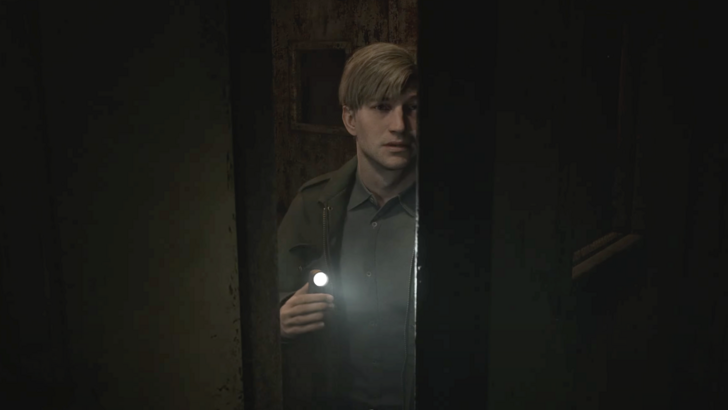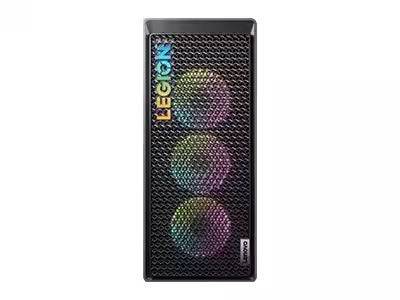AMD Radeon RX 9070 XT Review
For several generations, AMD has striven to compete with Nvidia's high-end offerings. However, with the AMD Radeon RX 9070 XT, Team Red strategically targets the majority of gamers, abandoning the ultra-high-end market dominated by the RTX 5090. The result? A graphics card that excels for most users.
Priced at $599, the AMD Radeon RX 9070 XT rivals the $749 GeForce RTX 5070 Ti, immediately establishing itself as a top contender. AMD further enhances its appeal with the introduction of FSR 4, finally bringing AI upscaling to its cards. This makes it the ideal choice for 4K gaming, especially for those unwilling to spend $1,999 on the RTX 5090.
Purchasing Guide
The AMD Radeon RX 9070 XT launched March 6th, starting at $599. However, expect price variations among third-party models. Aim for a price under $699.
AMD Radeon RX 9070 XT – Photos
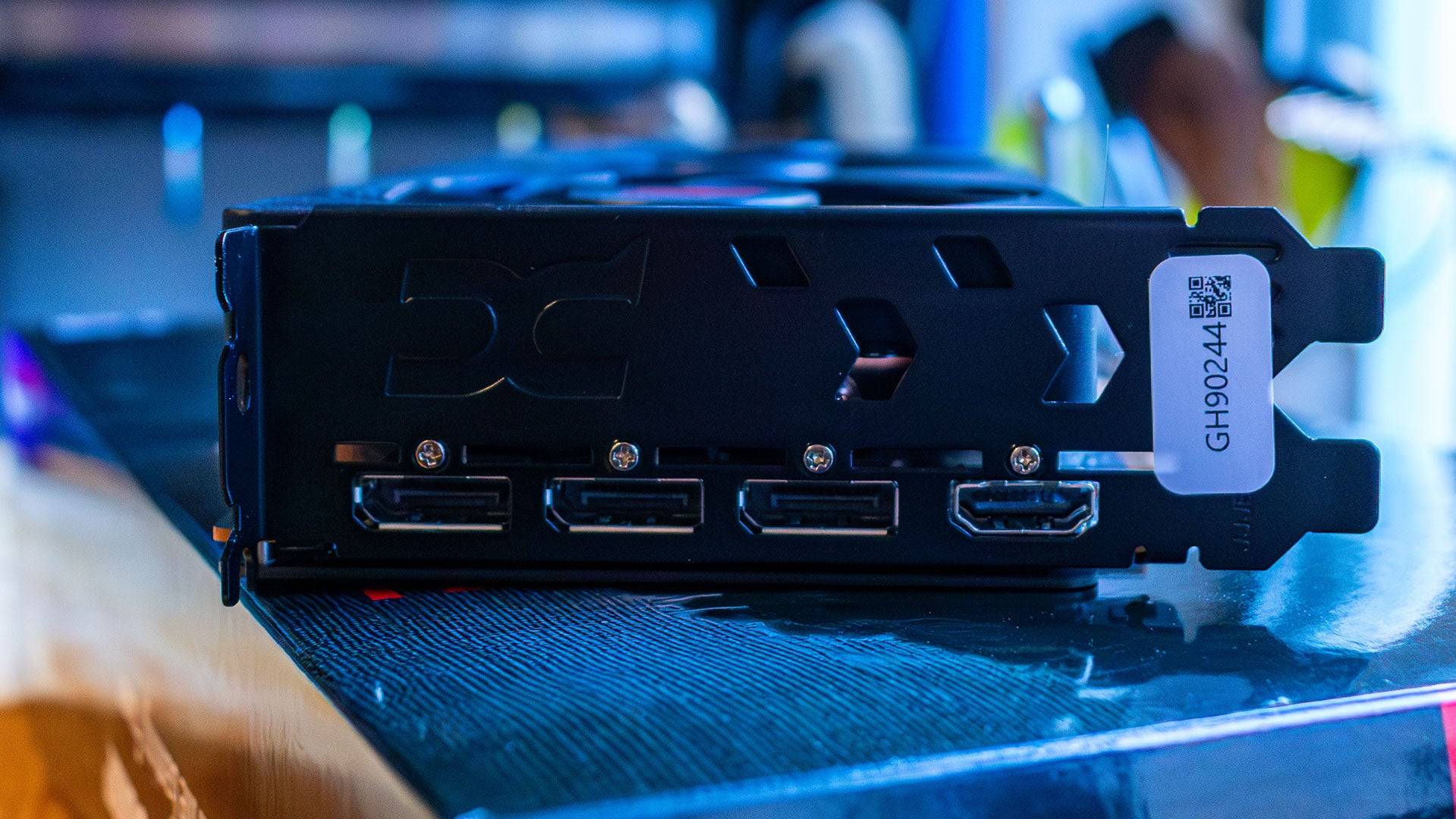

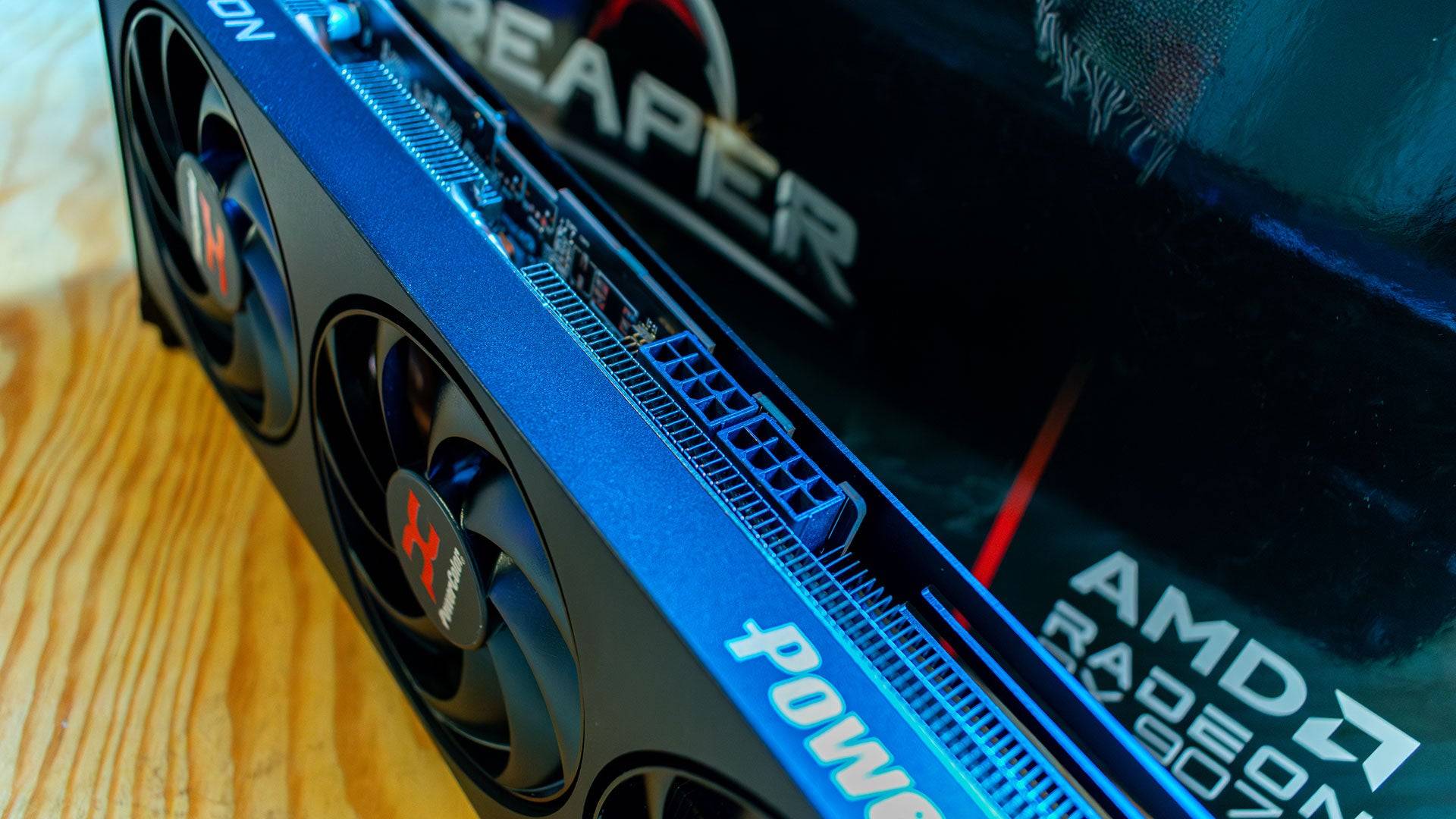
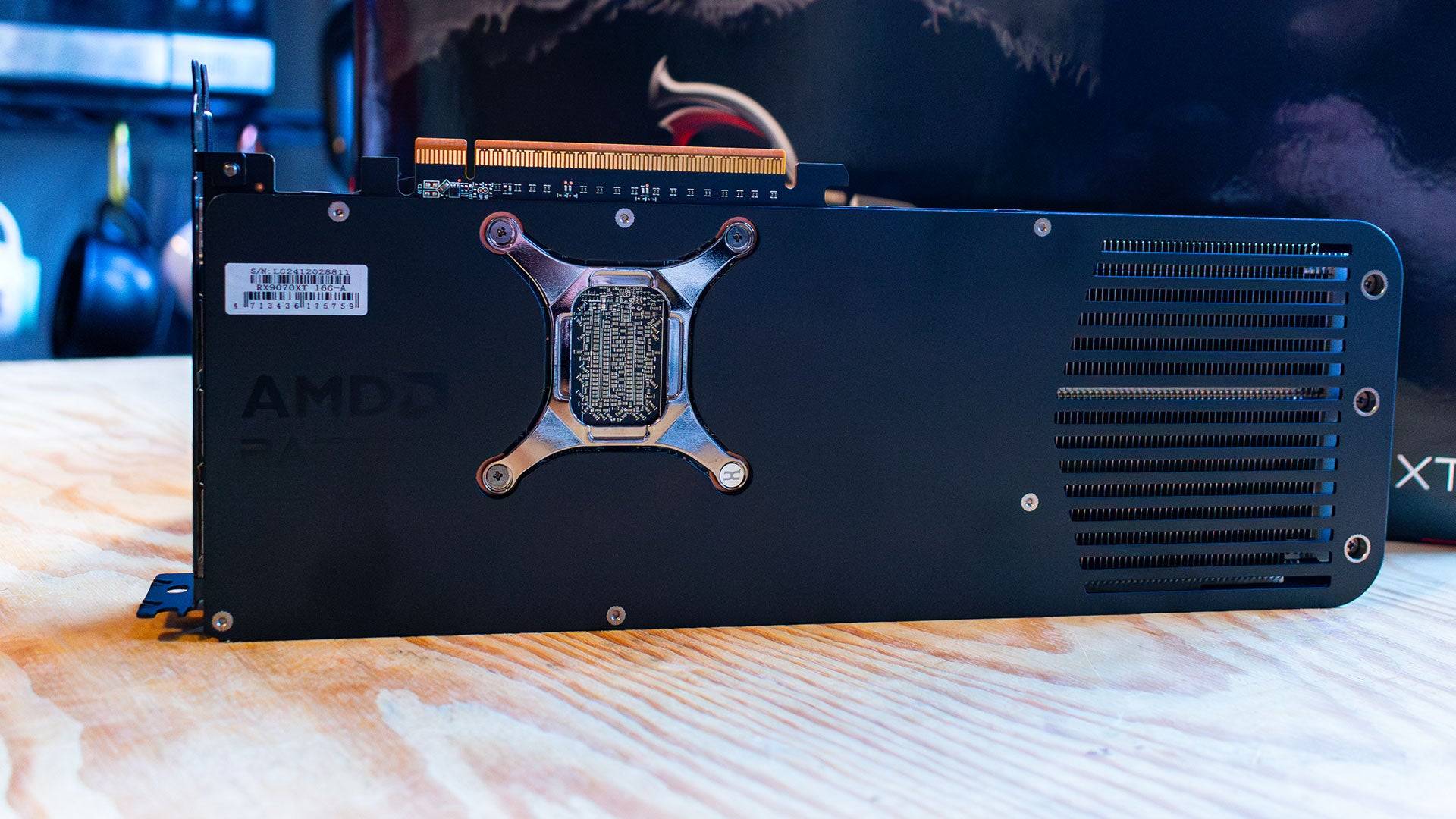
Specs and Features
Built on the RDNA 4 architecture, the AMD Radeon RX 9070 XT boasts improved shader cores, but its standout features are the new RT and AI Accelerators. These accelerators power FidelityFX Super Resolution 4 (FSR 4), AMD's first AI upscaling technology. While FSR 4 doesn't always boost frame rates compared to FSR 3.1, it significantly enhances image accuracy and quality. Conveniently, Adrenalin software allows users to disable FSR 4 if frame rate prioritization is preferred.
Beyond AI upscaling, enhanced shader cores deliver better per-core performance. Despite having 64 Compute Units (compared to 84 in the RX 7900 XT), the 9070 XT achieves a substantial generational leap at a lower price point. Each Compute Unit features 64 Streaming Multiprocessors (SMs), totaling 4,096, along with 64 ray accelerators and 128 AI accelerators. However, memory is reduced to 16GB GDDR6 on a 256-bit bus (compared to 20GB GDDR6 on a 320-bit bus in the RX 7900 XT). While sufficient for most 4K gaming, this is a reduction in both capacity and bandwidth.
The RX 9070 XT has a slightly higher power budget (304W) than its predecessor (300W), though testing showed the 7900 XT actually consumed more power. This power budget is typical for modern cards, making cooling manageable. Unlike previous generations, AMD isn't releasing a reference design; third-party manufacturers provide all models. My review unit, the Powercolor Radeon RX 9070 XT Reaper, maintained temperatures around 72°C during testing despite its compact triple-fan design.
The card utilizes standard dual 8-pin PCI-E power connectors, simplifying upgrades for most users with a 700W power supply (as recommended by AMD). Connectivity includes three DisplayPort 2.1a and one HDMI 2.1b ports. The absence of a USB-C port is a minor drawback.

FSR 4
FSR 4, AMD's AI upscaling solution, finally rivals DLSS. Unlike previous FSR versions, which suffered from ghosting and fuzziness, FSR 4 uses AI accelerators to analyze frames and game engine data for accurate upscaling. While image quality surpasses FSR 3, a performance hit is expected. In *Call of Duty: Black Ops 6* at 4K Extreme settings, FSR 4 reduced frame rates by approximately 10% but improved image quality. Similarly, *Monster Hunter World* showed a 20% performance drop. This performance decrease is expected due to the increased computational demands of AI upscaling. Fortunately, FSR 4 is optional and can be disabled in Adrenalin software.
AMD Radeon RX 9070 XT & 9070 – Benchmarks
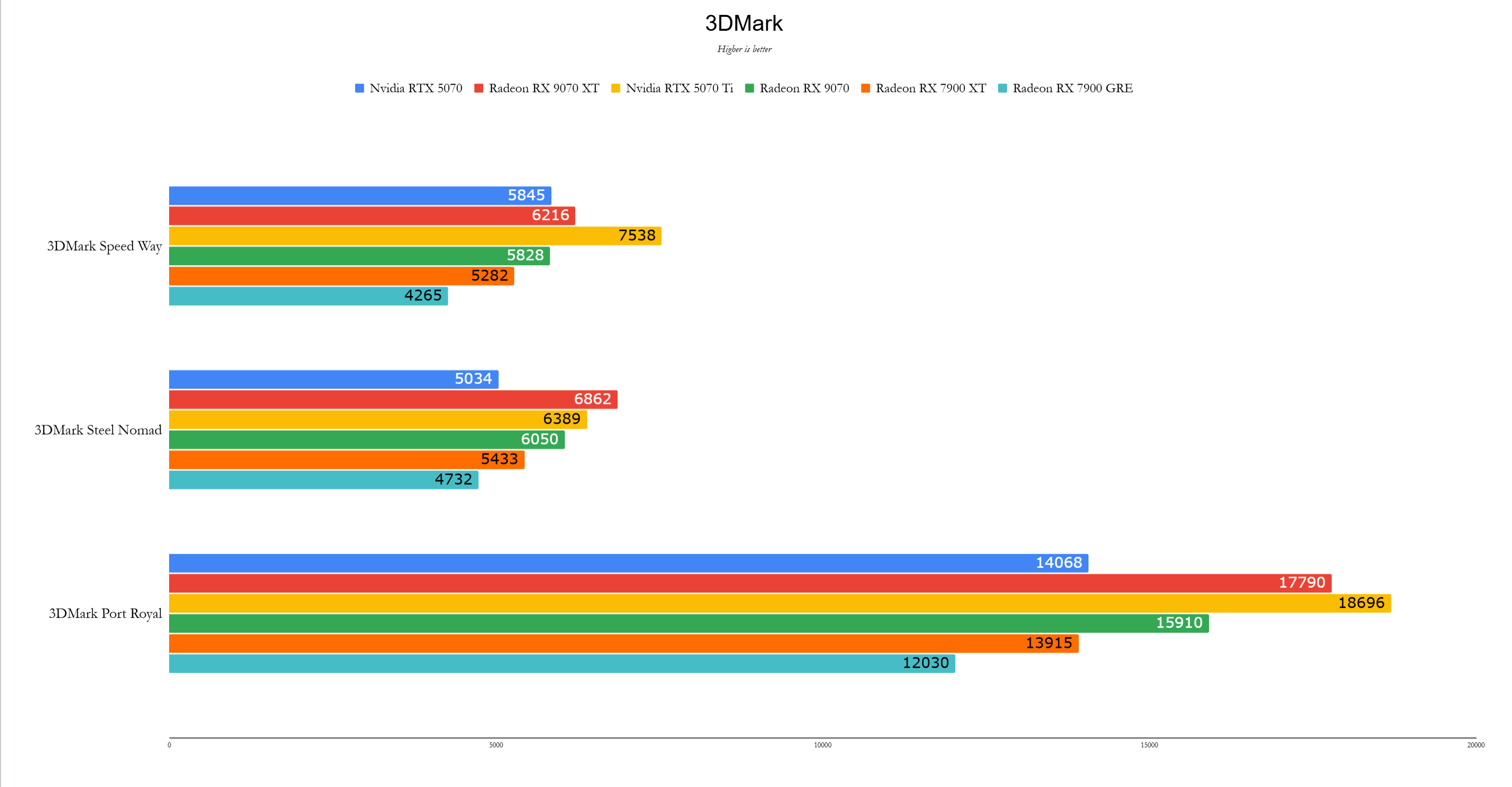
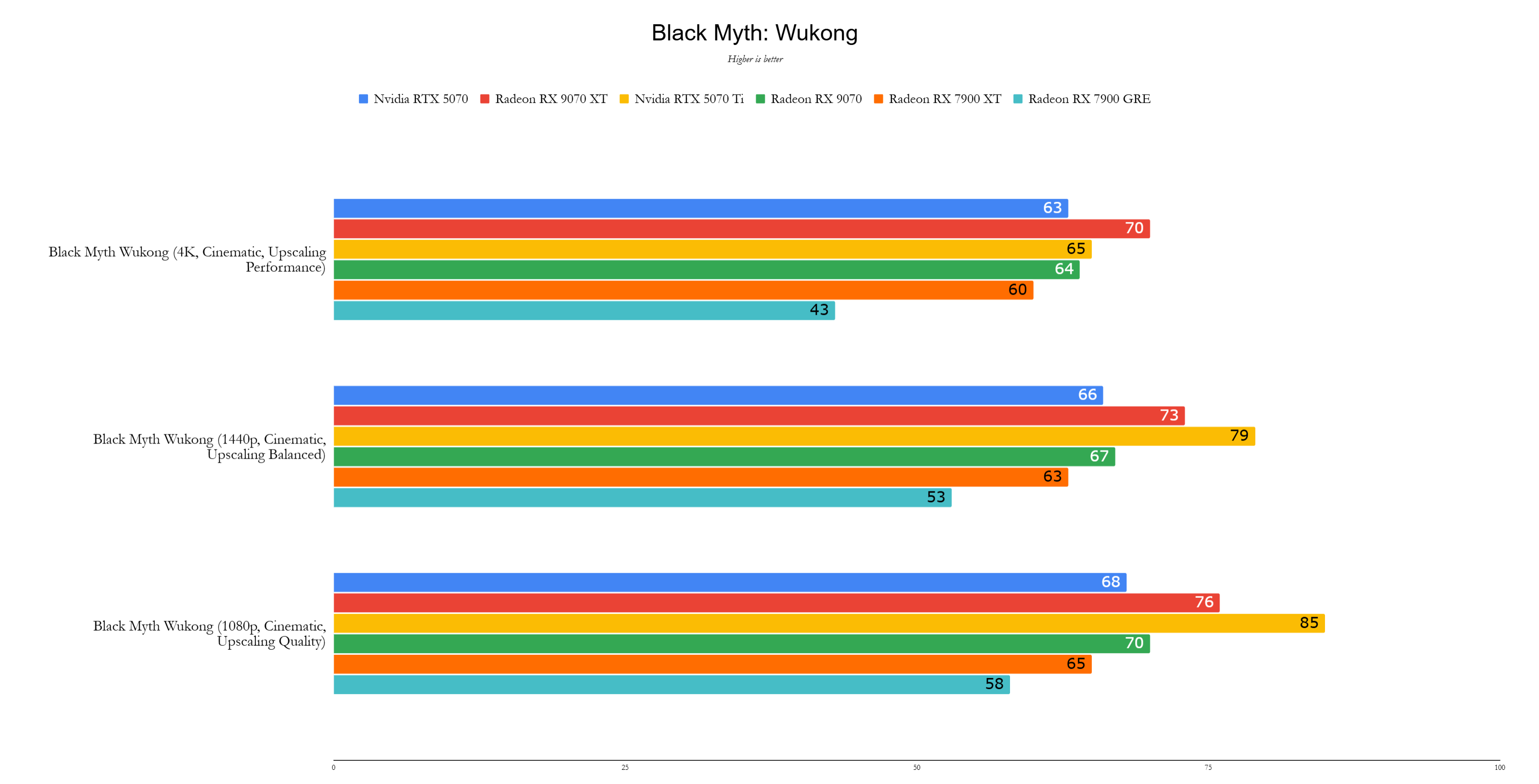

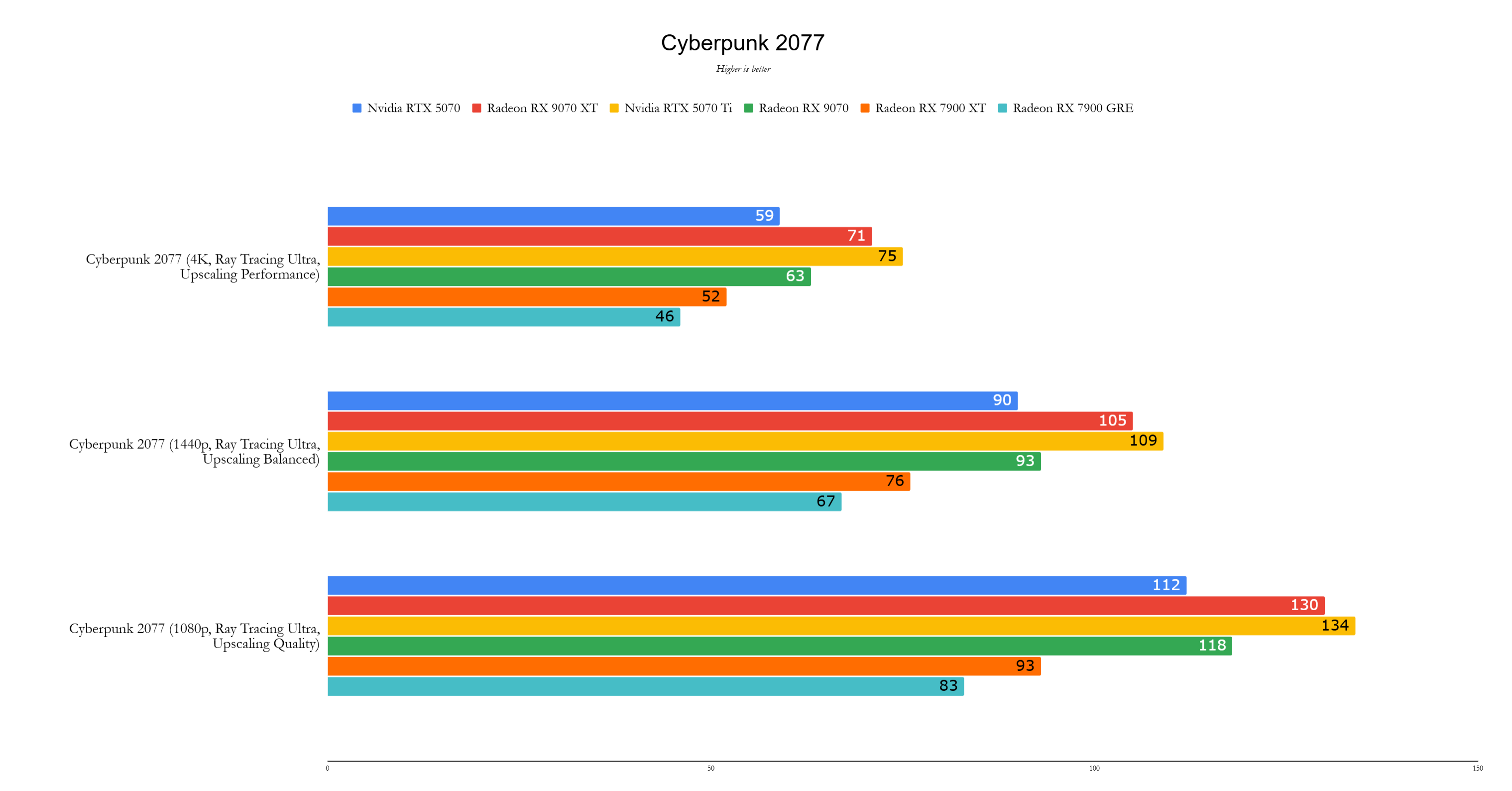
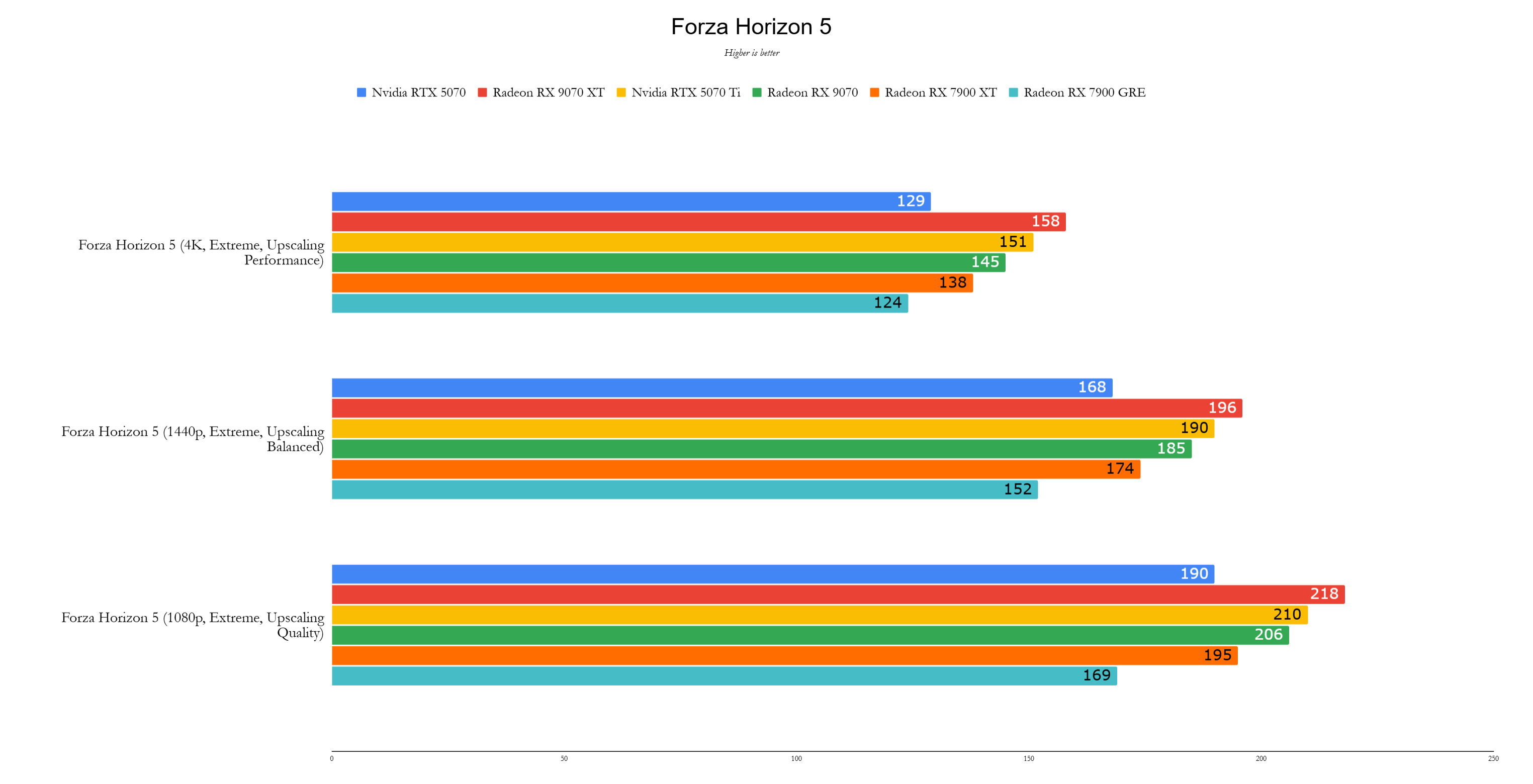
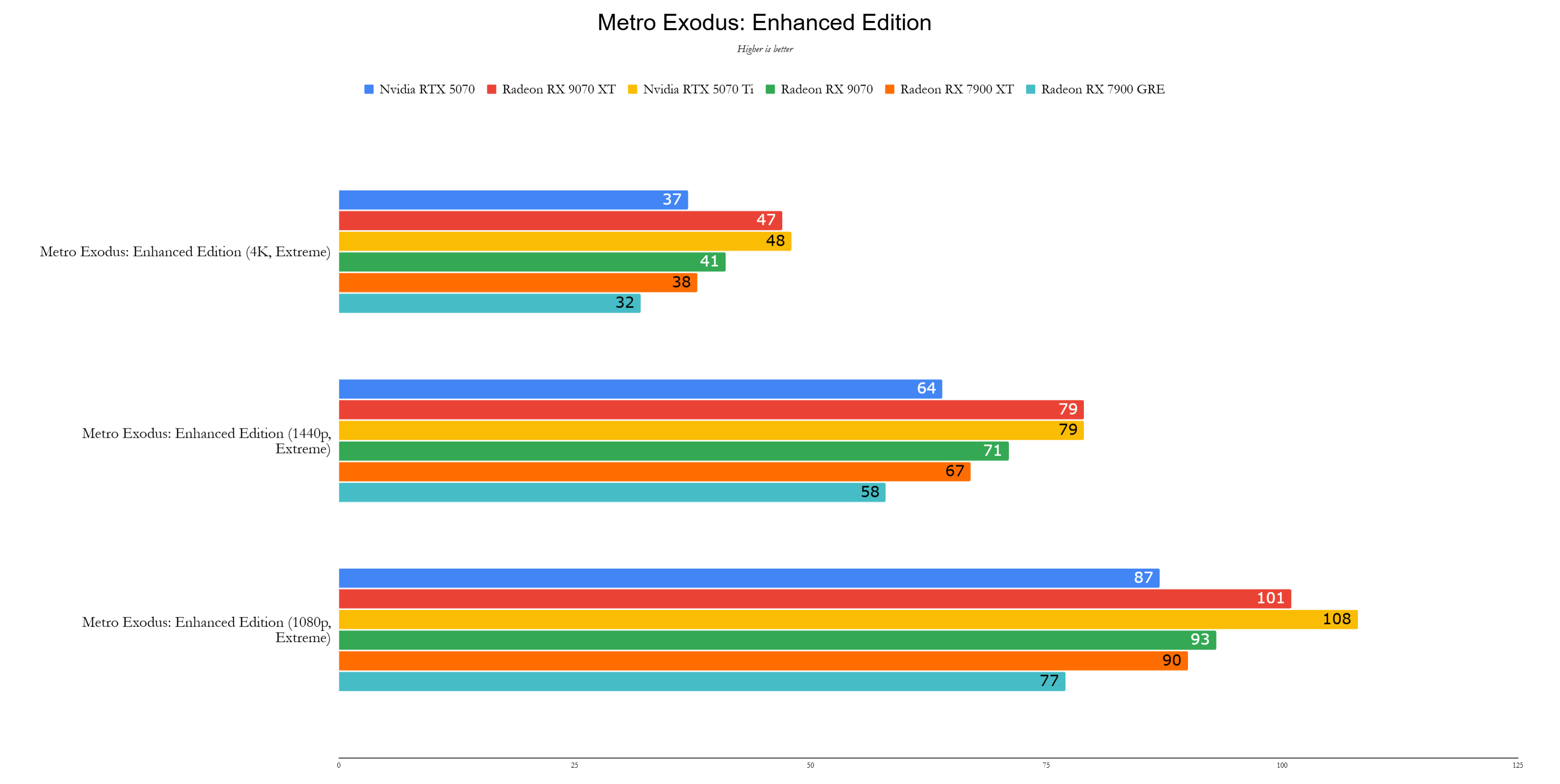
Performance
The Radeon RX 9070 XT delivers exceptional performance for its price. At $599, it undercuts the RTX 5070 Ti by 21% while offering comparable performance. Across various benchmarks, it’s approximately 17% faster than the RX 7900 XT and 2% faster than the RTX 5070 Ti. Its strength is particularly evident in 4K gaming, maintaining its lead even with ray tracing enabled. Testing was conducted using the latest drivers available at the time.
3DMark benchmarks show an 18% improvement over the 7900 XT in Speed Way and a 26% improvement in Steel Nomad, even surpassing the RTX 5070 Ti by 7% in the latter. Game benchmarks reveal varied results. *Call of Duty: Black Ops 6* shows a 15% advantage over the RTX 5070 Ti. *Cyberpunk 2077*, traditionally favoring Nvidia, shows a small 5% difference. *Metro Exodus* delivers near-identical performance compared to the RTX 5070 Ti. *Red Dead Redemption 2* highlights the 9070 XT's Vulkan performance advantage. However, *Total War: Warhammer 3* shows a 13% deficit against the RTX 5070 Ti. *Assassin's Creed Mirage* and *Black Myth: Wukong* demonstrate significant wins for the 9070 XT, showcasing improved ray tracing performance compared to the previous generation. *Forza Horizon 5* also shows a slight performance advantage.
The Radeon RX 9070 XT represents a significant step forward for AMD, offering high-end performance at a more accessible price point. While not as powerful as the RTX 5080 or 5090, it provides excellent value for most gamers, reminiscent of the GTX 1080 Ti's impact in 2017.
Test System: CPU: AMD Ryzen 7 9800X3D; Motherboard: Asus ROG Crosshair X870E Hero; RAM: 32GB G.Skill Trident Z5 Neo @ 6,000MHz; SSD: 4TB Samsung 990 Pro; CPU Cooler: Asus ROG Ryujin III 360
- ◇ Best Buy Launches AMD Radeon RX 9070, 9070 XT Gaming PCs Apr 27,2025
- ◇ Best Deals on AMD Radeon RX 9070 and 9070 XT Prebuilt Gaming PCs Starting at $1350 May 18,2025
- ◇ AMD Radeon RX 9070: In-Depth Review Apr 21,2025
- ◇ AMD Radeon RX 9070 XT Gaming PC Price Slashed by Amazon Apr 18,2025
- ◇ AMD Ryzen 9 9950X3D: Performance Reviewed Apr 10,2025
- ◇ The Powerful AMD Zen 5 9950X3D, 9900X3D, and 9800X3D Gaming CPUs Are Now Available Apr 04,2025
- ◇ Top Deals: PS Portal, PS5 Controllers, AMD Ryzen X3D CPUs, iPad Air Mar 29,2025
- ◇ Where to Buy the Phenomenal AMD Radeon RX 9070 and 9070 XT Graphics Cards Mar 27,2025
- 1 Fortnite: Chapter 6 Season 1 NPC Locations Feb 13,2025
- 2 Culinary Journey Thrives for Six Jan 01,2025
- 3 Pokémon Go Is Celebrating New Year’s 2025 with Festive Fireworks and More! Jan 03,2025
- 4 Roblox: Warrior Cats: Ultimate Edition Codes (January 2025) Feb 12,2025
- 5 Tips to Conquer the Dragon Quest III: HD-2D Remake Feb 21,2025
- 6 Roblox Game Codes Updated: April 2025 May 13,2025
- 7 How To Fix Common Marvel Rivals Error Codes Feb 20,2025
- 8 Pokémon GO Fest 2025: Fest Dates, Locations, Details Revealed Feb 13,2025
-
Top Beauty Trends for This Season
A total of 10
-
Unique Wallpaper Apps for Every Style
A total of 10
-
Ultimate Baseball Games for Android
A total of 10










